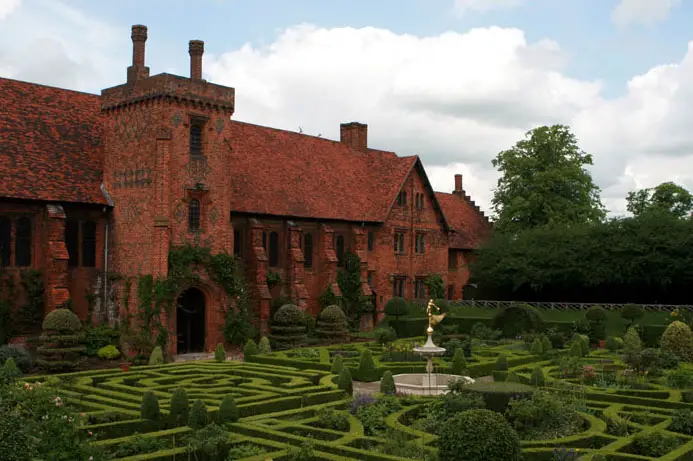 A big welcome to historian Elizabeth Norton who joins us today with a guest article as part of the virtual book tour for her newly released book The Lives of Tudor Women.
A big welcome to historian Elizabeth Norton who joins us today with a guest article as part of the virtual book tour for her newly released book The Lives of Tudor Women.
The Tudor dynasty is bookended by two princesses named Elizabeth Tudor, who serve as the full-stops between which the lives of countless women were lived. The second Elizabeth Tudor, whose death brought the dynasty to an end in March 1603, is, of course, well known. But the other, who was born in 1492, is largely forgotten. As the playmate of his early childhood she is, however, Henry VIII’s lost sister.
Towards the end of January or early February 1492, Queen Elizabeth of York would have felt a familiar fluttering in her womb – a fluttering that provided proof that she had conceived for the fourth time. She was, by then, close to the midway point of her pregnancy. But in the first months of pregnancy, the condition was notoriously difficult to diagnose. Could her symptoms merely be ‘her natural sickness or store of water?’ Alternatively, could her increase in girth be due to ‘some windy matter’ rather than an expected baby? It was better, most physicians reasoned, to wait until the baby was actually felt to move before diagnosis was made.
Elizabeth of York may have initially have had concerns over her fourth pregnancy, because she had conceived only three months after the birth of her third child, Henry, on 28 June 1491. To Elizabeth and her husband, Henry VII, whose marriage had united the warring houses of York and Lancaster, each of their ‘issue lawfully born’ helped to symbolise their union and their hold on the throne. Nonetheless, such a rapid new pregnancy in 1492 was a cause for concern, given the very real dangers that threatened women in pregnancy and childbirth. Elizabeth of York, who would later die bearing her seventh child, did however, have privileged access to pain relief: calling for the girdle of Our Lady from Westminster Abbey in good time for her confinements.
The royal couple arrived at Sheen (later known as Richmond) to the west of London in spring 1492, where Elizabeth took to her chamber to await the birth. There was little quiet to be had, since in May, the king ordered his clerk of works to build lists at the palace for a great tournament, held during the weeks that the couple awaited the birth. Nonetheless, the queen retired to the feminine world of her chamber around a month before her child was due, lying in stuffy darkness since the windows – by convention in royal childbeds – were covered.
On 2 July 1492 Elizabeth of York gave birth to her fourth child safely. Even in summertime, it was considered advisable for there to be a warm fire in the birthing room, towards which the queen’s midwife, Alice Massey, carefully carried the naked baby as the child uttered its first cries. She had already expertly tied the umbilical cord with a double threat, before taking sharp scissors from her bag to sever the tie to the mother. The baby girl was wiped clean or washed and wrapped in a blanket, before being passed to her wet nurse to be swaddled and fed.
Wet nurses were always carefully chosen. A nurse, believed contemporaries, should be of no ‘servile condition’, and instead possess a good birth and background. The royal couple had greater choice than most, since nursing one of their children was a truly respectable office. In 1492, a few weeks before the expected birth, they had engaged Cecily Burbage, who was found conveniently close to Sheen at Hayes, to the west of London. She was a married gentlewoman of around twenty-five or twenty-six years old – the perfect age, it was thought, for wetnursing, while her own children would have been examined and considered robust enough by the royal commissioners who engaged her. Once employed, she left her young family behind to take up the care of the new Princess Elizabeth. The girl was baptised at Sheen, before being moved to the main royal nursery at Eltham Palace.
At Eltham, a medieval palace which had been renovated by Princess Elizabeth’s grandfather, Edward IV, the girl entered a nursery already occupied by her two-year-old sister Margaret and her brother Henry, who had only just turned one. The star of the family – Prince Arthur – was also its most distant member. The king’s eldest son, who was then aged nearly six, had been whisked away after his birth to Farnham, in Hampshire, there to be nursed. There was, however, some contact between the two nursery establishments. Prince Arthur was attended by his own ‘lady mistress, nurses, and other gentlewomen; from the time of his birth. His dry nurse, who was in charge of the everyday running of the nursery, was Alice Bywimble, who had by June 1491 transferred over to the younger children’s establishment.

Elizabeth of York
In the royal nursery, the children were tended to by their nurses, played games with each other or delighted in toys. Since it was recommended that boys be weaned a year later than girls, Henry and Elizabeth were probably weaned together, with their nurses carefully chewing food in their own mouths before passing it to their charges. In all cases, weaning occurred later than in modern times: Prince Henry was fully weaned shortly before he turned four in March 1495.
To begin with, Elizabeth of York and Henry VII were remarkably fortunate in their childrearing, losing only their youngest child, Catherine, at birth. However, infant mortality was rife in Tudor England and their good fortune could not last forever. Christmas 1494 – Princess Elizabeth’s last – was spent apart from her parents, with the king and queen still busy with their festivities at Westminster, where they were entertained with masques. Her royal parents were similarly preoccupied in the summer of 1495, as they set out on a great progress, heading first north-westwards, towards Bewdley, Ludlow and Shrewsbury.
As summer began to wane, and the evenings shortened, they went north, up past Derby and then to Northampton. There, King henry took care of nursery business, ordering the payment of the half yearly salaries of the staff serving ‘our right dearly beloved well-beloved children the Lord Henry the Ladies Margaret and Elizabeth’. There was no hint that anything was amiss at Eltham. Yet, on 14 September 1495, Princess Elizabeth died.
The cause of Elizabeth’s death is nowhere recorded. Most likely, she died of some simple childhood disease or from an accident, her death was apparently sudden and unexpected. Elizabeth’s parents were on the road between Northampton and Banbury when messengers set out to intercept them with news from Eltham. They continued on their progress, but the king did give orders for a grand funeral – the first of the Tudor dynasty – to be held at Westminster. Nonetheless, he and his wife seem to have accepted the news with equanimity. On 27 October, for his remaining offspring at Eltham, he placed an order ‘for diverse yards of silk bought for My Lord of York [Henry] and My Lady Margaret’. His nursery had shrunk in size. But it was expected soon to grow, for Elizabeth of York was, by then, reaching the halfway point of her fifth pregnancy: life went on.
It did not, however, go on for Princess Elizabeth – Henry VIII’s lost sister. Although provided with a fine tomb memorial at Westminster, she was largely forgotten by history. There are, however, a few hints that, among her family, she was remembered. A beautiful medieval breviary in royal ownership was later augmented by at least three and, possibly, four Tudor hands to provide a calendar of royal dates in order of the year. Princess Elizabeth’s birth or death dates were not recorded, but in the record for 18 March, which marked the birthday of her sister, Princess Mary, it stated that Mary was the third daughter of Henry VII. Implicitly, at least, the short life of the first Elizabeth Tudor was acknowledged.
Book details:
 The turbulent Tudor age never fails to capture the imagination. But what was it actually like to be a woman during this period? This was a time when death in infancy or during childbirth was rife; when marriage was usually a legal contract, not a matter for love, and the education of women was minimal at best. Yet the Tudor century was also dominated by powerful and characterful women in a way that no era had been before.
The turbulent Tudor age never fails to capture the imagination. But what was it actually like to be a woman during this period? This was a time when death in infancy or during childbirth was rife; when marriage was usually a legal contract, not a matter for love, and the education of women was minimal at best. Yet the Tudor century was also dominated by powerful and characterful women in a way that no era had been before.
Elizabeth Norton explores the seven ages of the Tudor woman, from childhood to old age, through the diverging examples of women such as Elizabeth Tudor, Henry VIII’s sister who died in infancy; Cecily Burbage, Elizabeth's wet nurse; Mary Howard, widowed but influential at court; Elizabeth Boleyn, mother of a controversial queen; and Elizabeth Barton, a peasant girl who would be lauded as a prophetess. Their stories are interwoven with studies of topics ranging from Tudor toys to contraception to witchcraft, painting a portrait of the lives of queens and serving maids, nuns and harlots, widows and chaperones.
Elizabeth Norton is a historian of the queens of England and the Tudor period. She is the author of biographies of Anne Boleyn, Jane Seymour, Anne of Cleves and Catherine Parr, and of England's Queens: The Biography.
Hardcover: 416 pages
Publisher: Head of Zeus (6 Oct. 2016), UK.
Language: English
ISBN-10: 1784081752
ISBN-13: 978-1784081751
The book is available as a hardcover and kindle from Amazon UK and is available for pre-order (release date: 4 July 2017) on Amazon US.
Tudor Society members can click here to enjoy a talk by Elizabeth Norton on the Boleyn family.



Very interesting. I had no idea Henry had a sister named Elizabeth. Looking forward to reading The Lives of Tudor Women.
Thank you for his great article.
*this
This story was very interesting to me. I have read many books about King Henry Vlll life, his wives and of his parent. I never read anything about his siblings. I know of his brother Arthur and Margaret. His other brothers/sisters are unknown to me. This article was extremely interesting and it made me want to read/learn more about the king’s family. I will be looking for these books. I hope you will help to provide a list of these books for us. Thank you for giving us this part of history of the Tudor family.
Very interesting read! I have read numerous books on the Tudors but never knew about Henry’s lost sister.
I have read lots of books about the Tudors, and never heard this story! Great article!
Very interesting, since I have never heard about this sister of Henry’s.
Thank you. So interesting. I can’t wait to read your book.
it would be interesting to find out for sure how she died
Thank you for such an informative article. I’ll be sure to pre-order the book. It seems so strange to me that they kept on with their progress and never turned back when their daughter died.
What an interesting and moving article about little Princess Elizabeth, the nursing of young royal children and the tragic loss of so many children, even those born healthy could die a few years later. The first five years of life were the most dangerous for a child. But I am surprised that her life would be included in a book on Tudor Women, as she was a child. Surely a better book would be one dedicated to Tudor children?